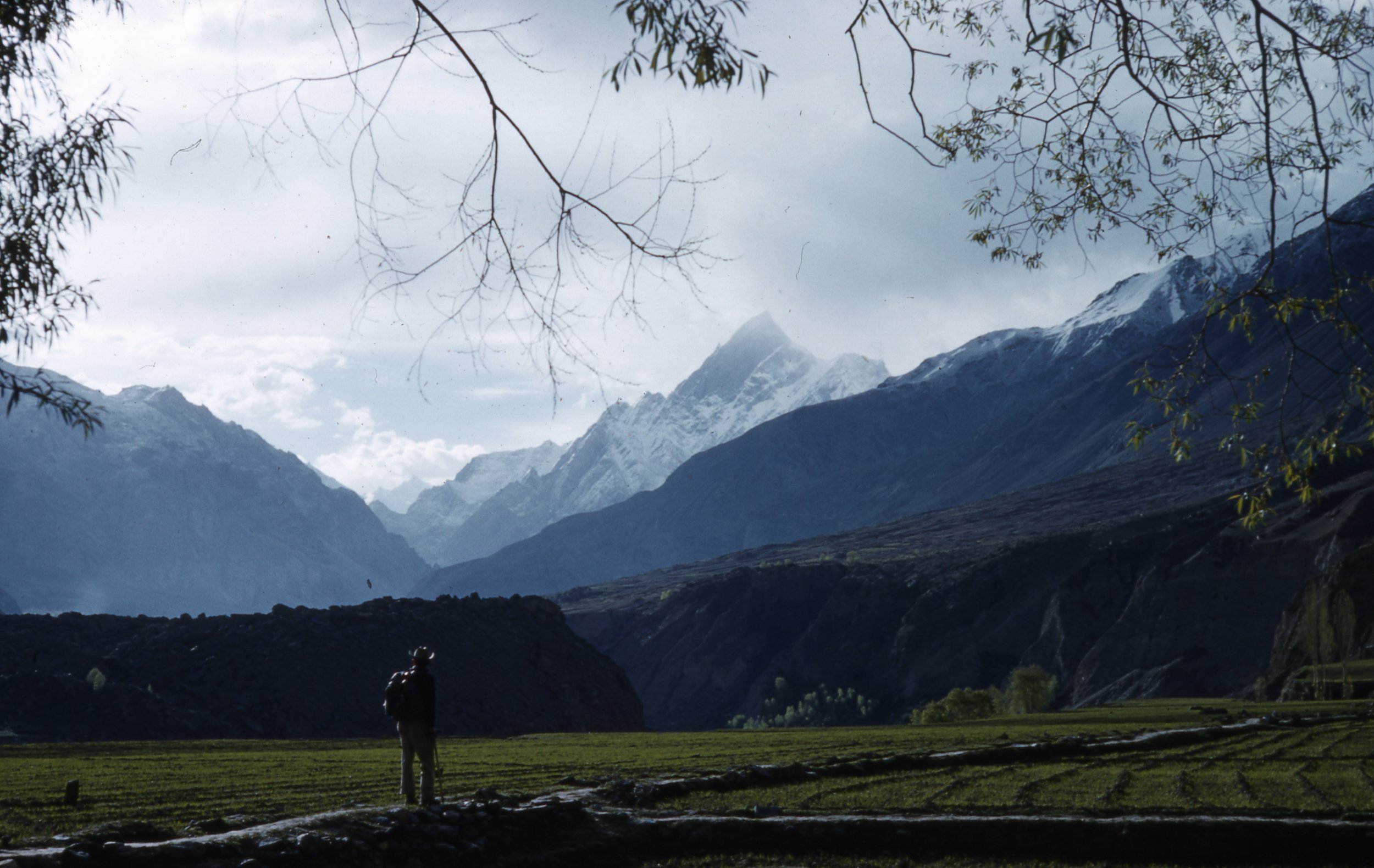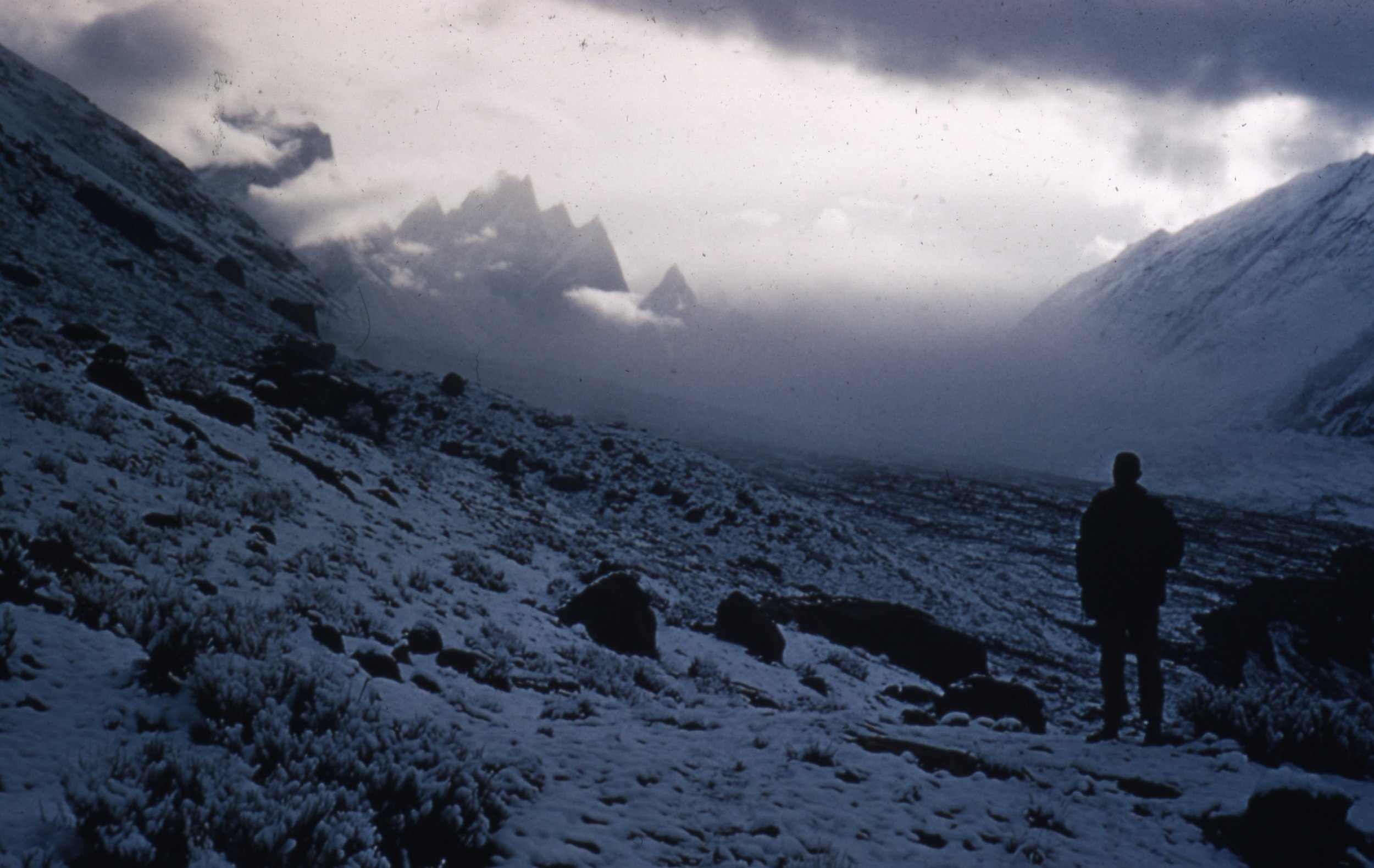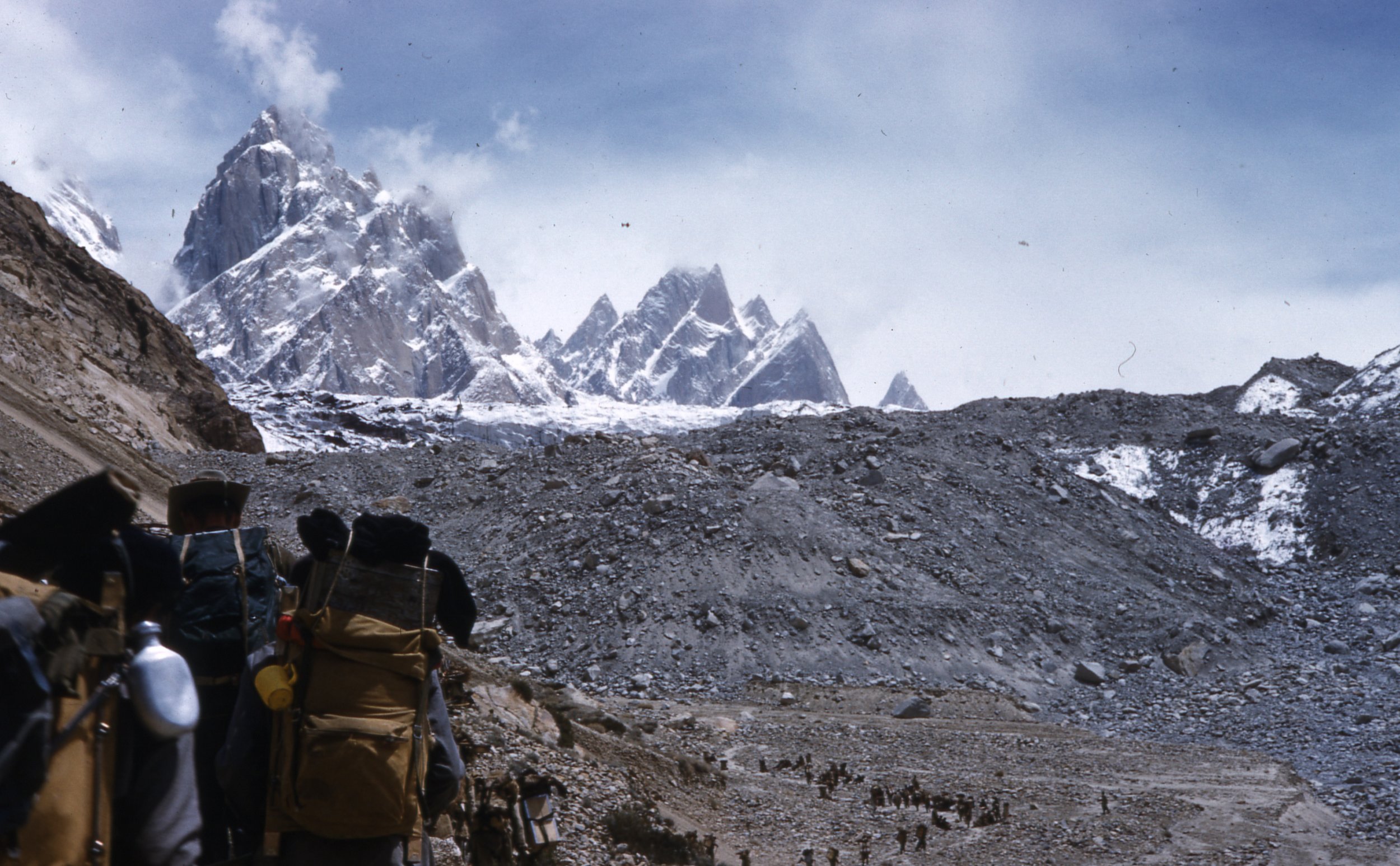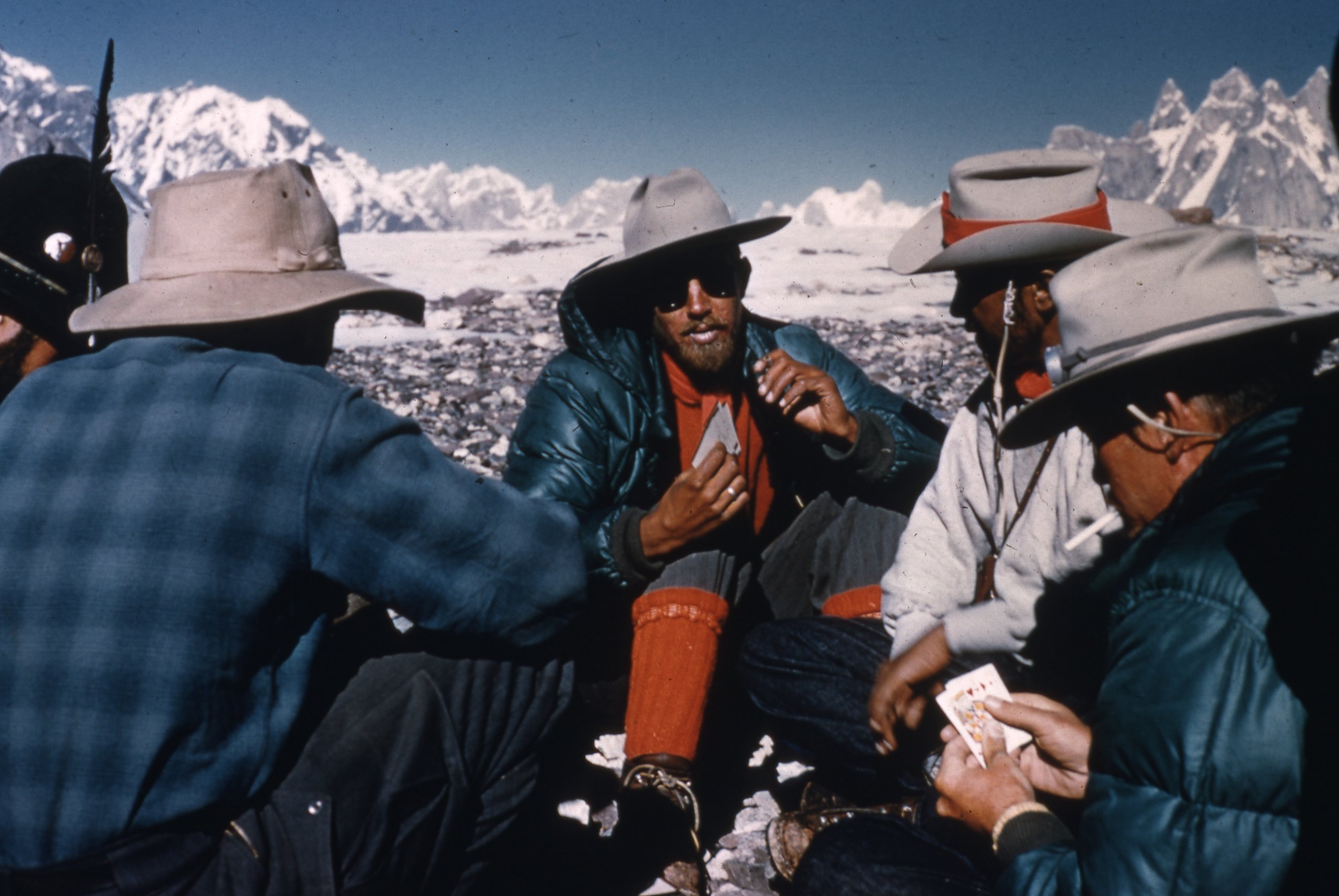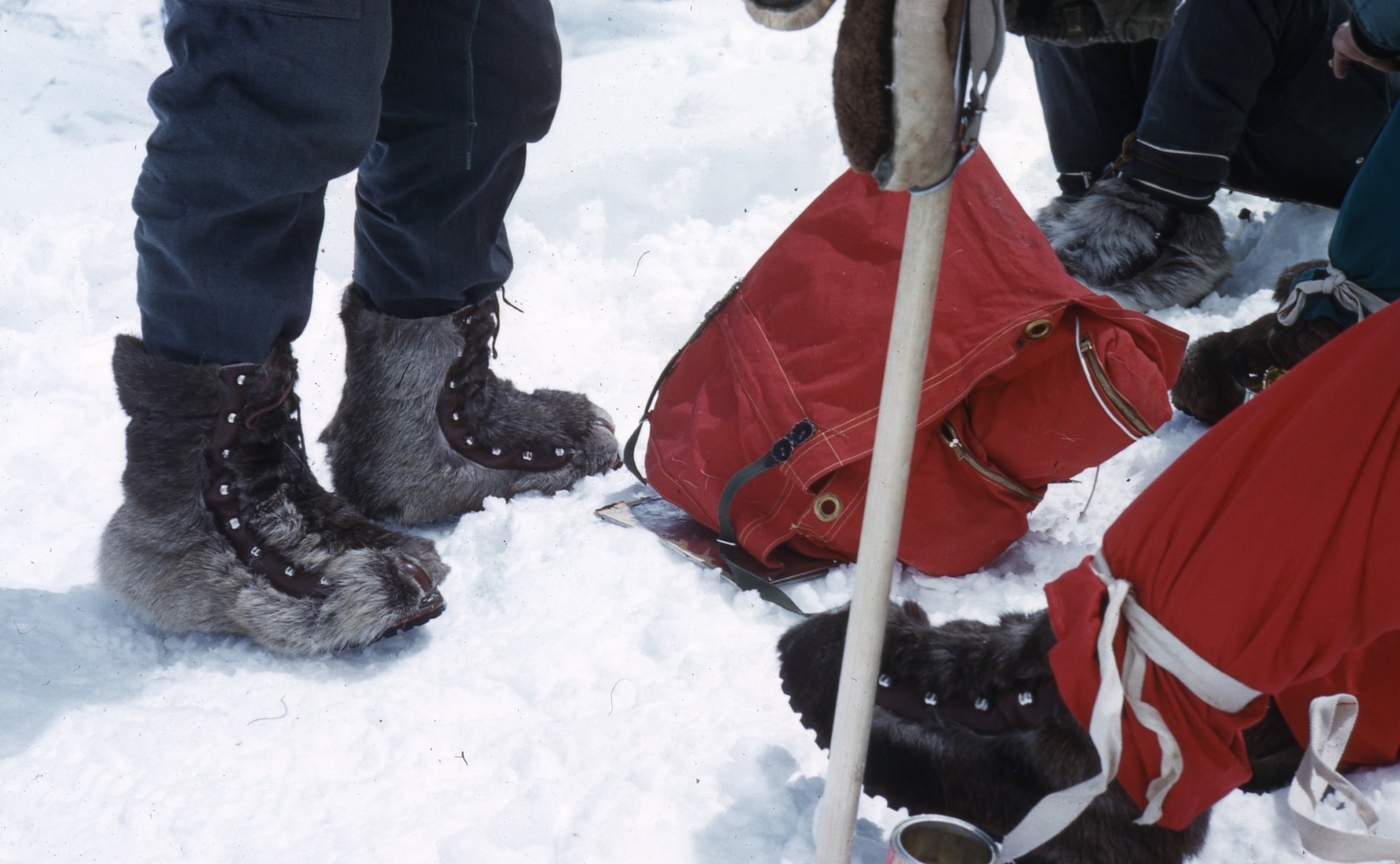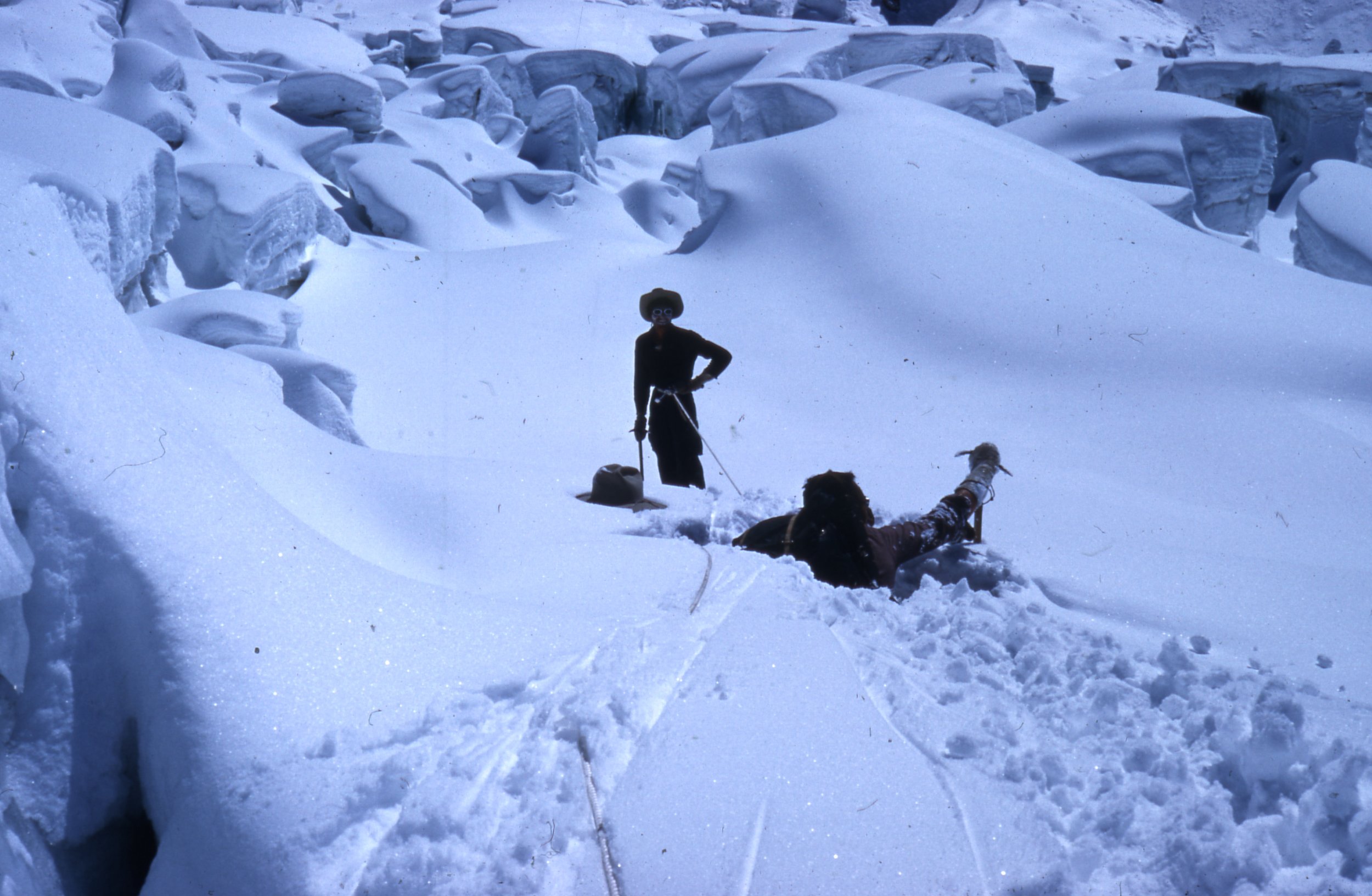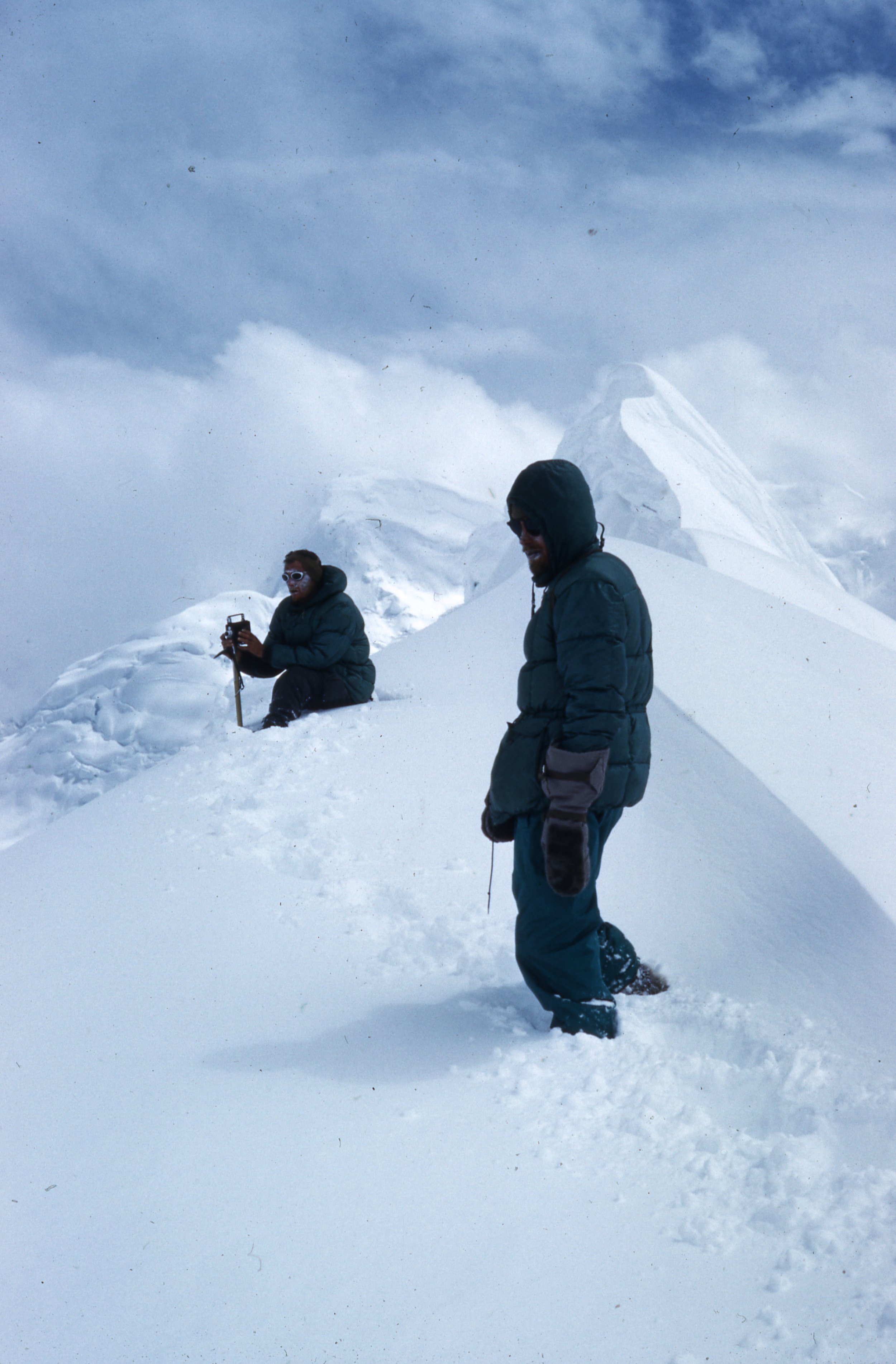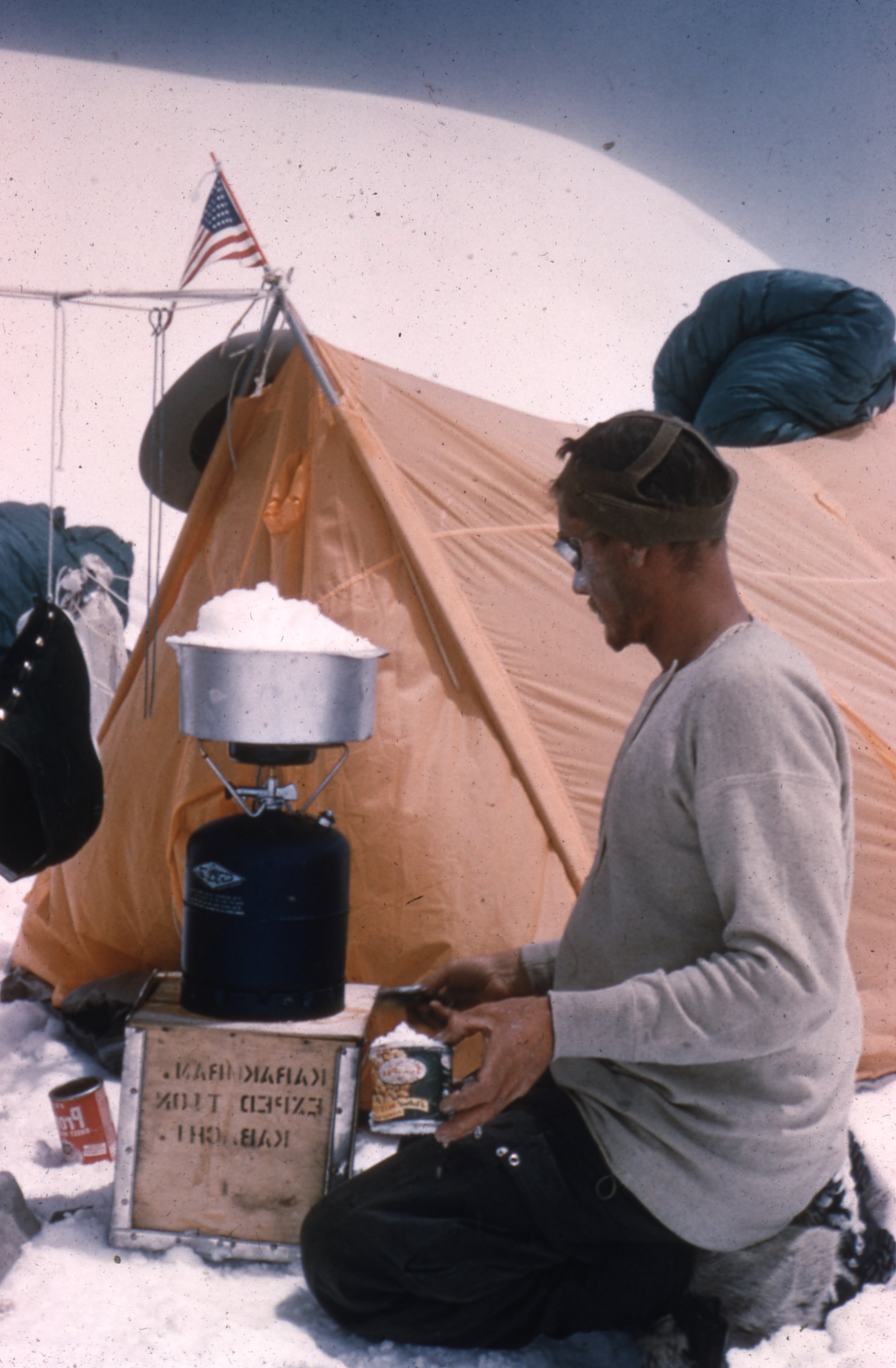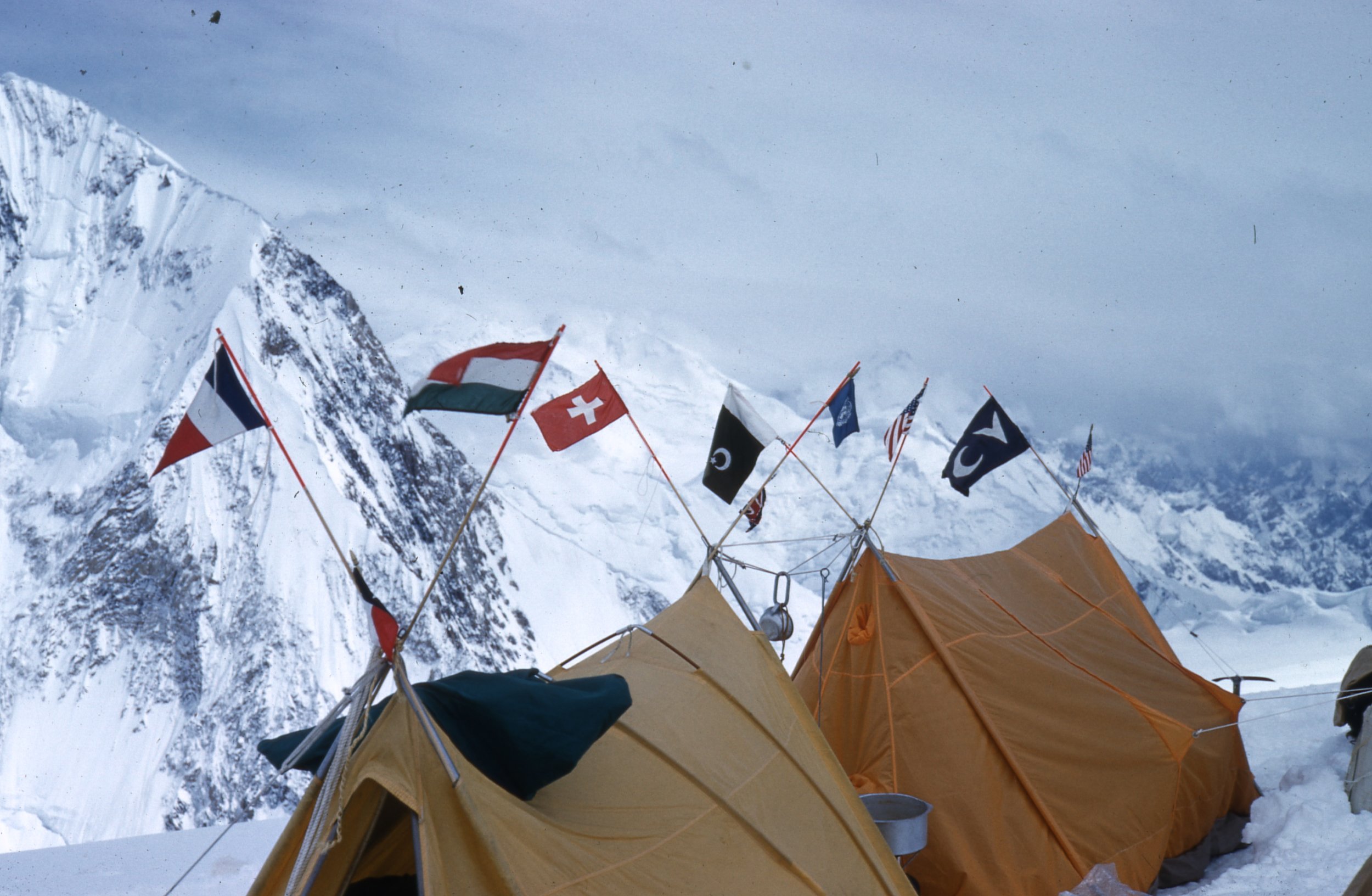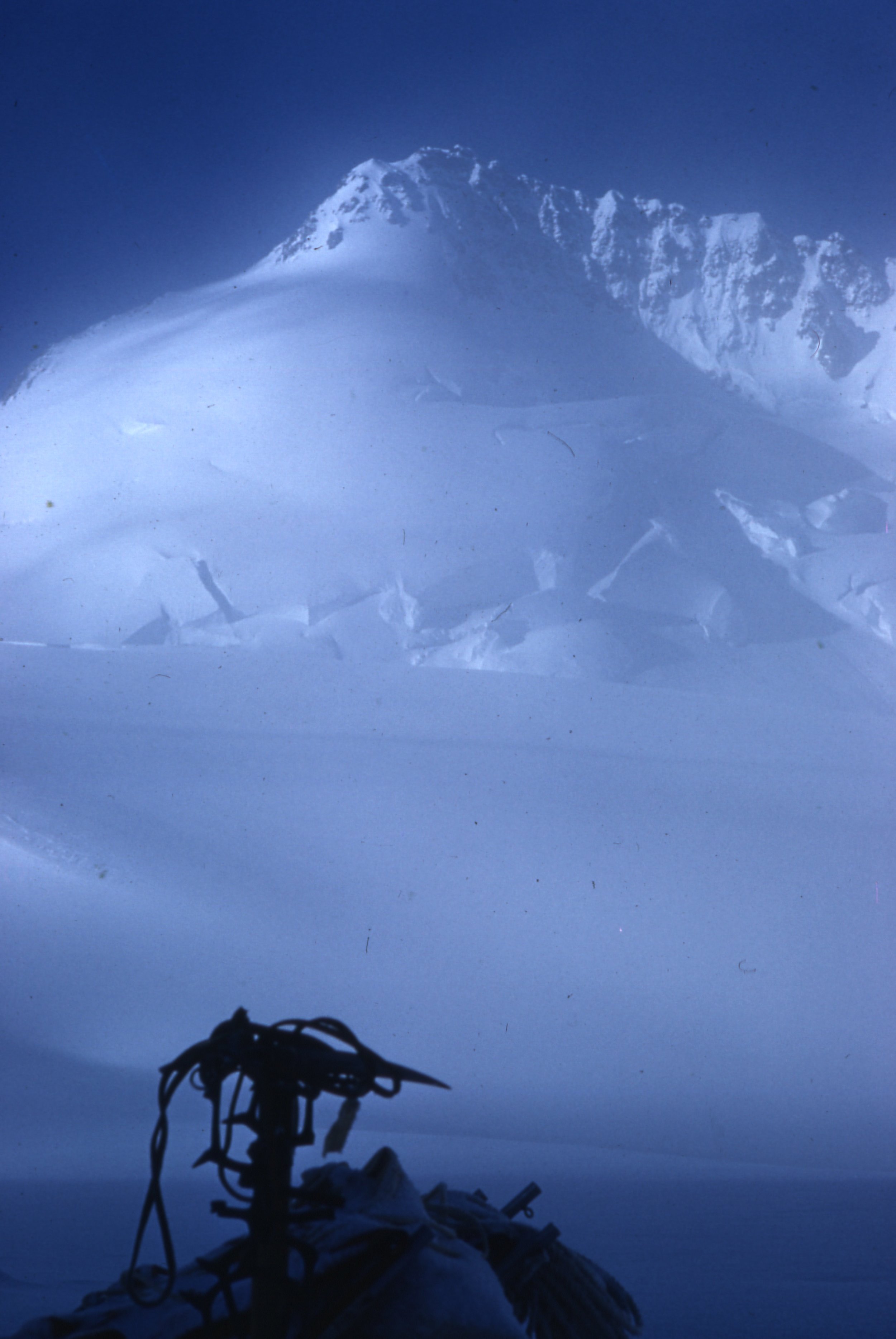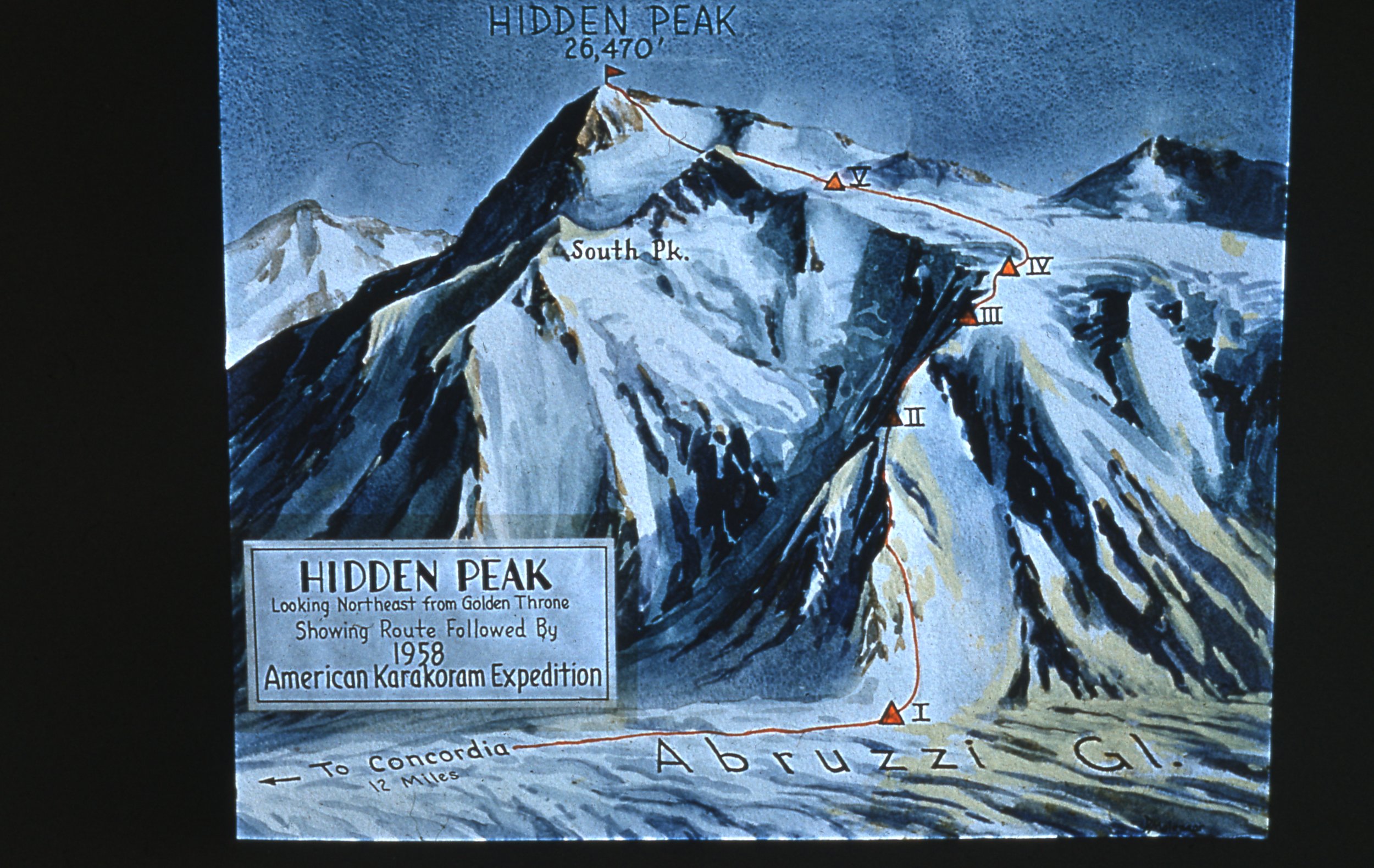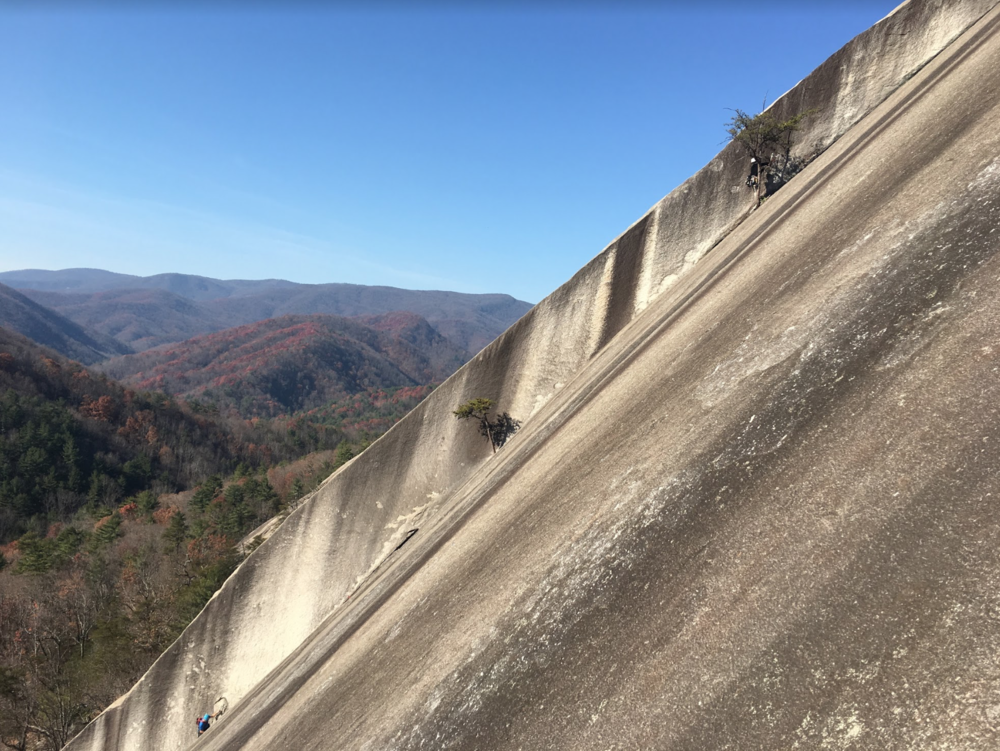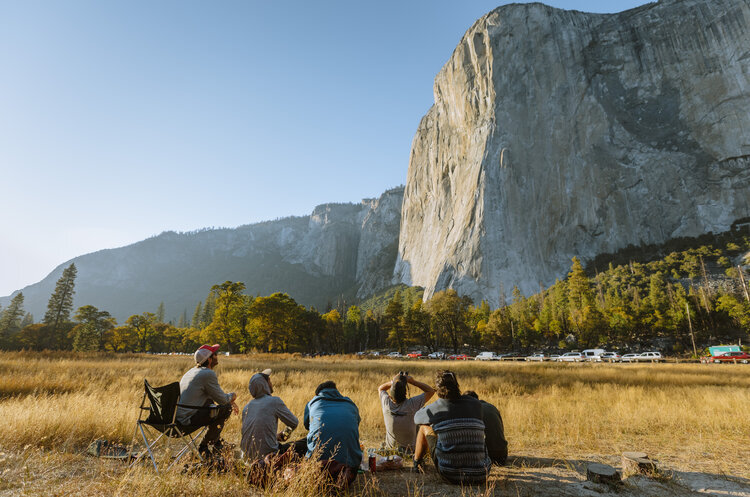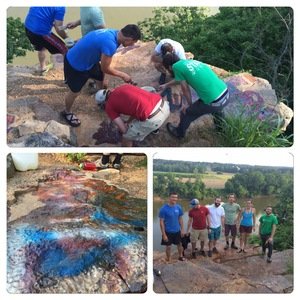2018 Live Your Dream Recipients
The American Alpine Club and The North Face are pleased to announce the recipients of the 2018 Live Your Dream grant. In total, $72,150 was awarded to 158 recipients.
NORTHEAST REGION
The Northeast Regional Selection Committee was chaired by Howard Sebold. Committee members included Tom Lannamann, Mikhail Martin, Martin Torresquintero, and TNF athlete Anna Pfaff.
Joshua Alcorn: New York, New York
$400 to attempt a fast and light Styggedalstind/Skagastølstind traverse in the Jotunheimen mountains, Norway.
Neil Berenholz: Nyack, New York
$200 for a 4 day trip to climb The Diagonal and other routes on Wallface, Adirondack high peaks.
Ethan Berman: Cambridge, Massachusetts
$800 to climb new lines in alpine style on Cerro Arkhata (5650 m), Cerro Mururata (5871 m) and Peak 5402 in the Cordillera Real Sur, Bolivia.
William Braasch Jr: Norwich, Vermont
$300 to establish a new, free, alpine style route on Tathagata Tower, Cirque of the Unclimbables and a secondary objective of a three-day ridge traverse within the Cirque.
Abigail Connell: Mystic, Connecticut
$250 to train to be a 5.12 climber by the end of 2018 and travel to El Potrero Chico, Mexico and climb Time Wave Zero (TWZ), IV/V 5.12a.
Corey Day: Philadelphia, Pennsylvania
$400 to climb 5.10-5.12 offwidth cracks and learn inverted crack climbing technique in Vedauwoo, WY.
Anthony DellaValle: Tonawanda, New York
$200 for a "Big Walls of the Northeast" trip - a 10 day trip to New Hampshire and the Adirondacks to complete Moby Grape (NH), Whitney-Gilman Ridge (NH), The Diagonal (NY), and Gamesmanship (NY).
Alissa Doherty: Somerville, Massachusetts
$250 to make first ascents in a range of serious, unnamed, unclimbed, peaks in a little known corner of the Alaska Range in south-central Alaska.
Rachel Drattler: Maplewood, New Jersey
$250 to climb the Southeast face of the Lotus Flower Tower, Cirque of the Unclimbables and potentially climb other peaks and towers in the region.
Arthur Eng: Bear, Delaware
$250 to attempt the second ascent of the South Ridge of Mount Russell, Denali National Park.
John Gassel: Somerville, Massachusetts
$250 to make first ascents in a range of serious, unnamed, unclimbed, peaks in a little-known corner of the Alaska Range in south-central Alaska.
Garrett Gibbons: Philadelphia, Pennsylvania
$400 to climb 5.10-5.12 offwidth cracks and learn inverted crack climbing technique in Vedauwoo, WY.
Gretchen Grebe: Scarborough, Maine
$250 to climb the Northeast Face on Pingora and East Ridge of Wolf's Head, Cirque of the Towers, Wind River Range.
James Gurian: Wayne, Pennsylvania
$400 for a two month trip out west to train and attempt the East Shoulder of South Howser Tower, Bugaboos and a traverse of the Cirque of the Towers in the Wind River Range.
Robert Johnson: Philadelphia, Pennsylvania
$500 for a week-long Yosemite trip to climb his first multi-day wall route: the South Face of Washington Column, as well as the East Buttress of Middle Cathedral Rock.
Emmett Lyman: Somerville, Massachusetts
$250 to make first ascents in a range of serious, unnamed, unclimbed, peaks in a little-known corner of the Alaska Range in south-central Alaska.
*A fourth member of this party was also awarded $250 for this objective.
John Martin: Princeton, New Jersey
$500 to climb Mount Shuksan via the Price Glacier route.
Evgenia Moiseeva: Boston, Massachusetts
$300 for a 5 day variation of the Monta Rosa Peaks traverse.
Michael Nawrot: Cambridge, Massachusetts
$450 to spend an extended time on glaciers in the Southern Alps in the Aoraki/Mount Cook region and climb alpine routes in the area.
Kira Ratcliffe: Middlebury, Vermont
$450 for a two-week trip to the Bugaboo Provincial Park in British Columbia to climb classic alpine trad routes and splitter cracks including the Beckey-Chouinard Route and Sunshine Crack.
Michael Reid: Windham, Maine
$250 to develop mountaineering skills in a two-day technical summit attempt on Mt. Hood via the West Crater Rim and continue to evolve diabetes self-management for climber's with type one diabetes.
Valerie Rogotzke: New Haven, Connecticut
$800 for a single-day, solo run of the 56-mile Circuito Cóndores in central Chile.
Tyler Rohr: Cambridge, Massachusetts
$500 to attempt the first free ascent of Pico Cao Grande, a 455-meter volcanic tower on the island of Sao Tome, via the 15-pitch route Nubivagant (Wandering in the Clouds).
Bernard Rusnock: Hackettstown, New Jersey
$400 to climb the Matterhorn from the Italian side and traverse the summit and descend via the Hornli Ridge into Switzerland.
Stormy Saint-Val: Cambridge, Massachusetts
$450 for a rock gym pass to improve climbing skill and train to participate in Color The Crag climbing festival.
Jacky Sawyer: New York, New York
$350 to advance climbing ability to the next level and build the skill and confidence to lead climb by spending two weeks on a self-designed climbing retreat with experienced climbers in Owens River Gorge and Bishop, California.
Tyler Simon: Stewartsville, New Jersey
$200, to climb the Matterhorn from the Italian side and traverse the summit and descend via the Hornli Ridge into Switzerland.
Michael Swartz: Somerville, Massachusetts
$500 to attempt the first free ascent of Pico Cao Grande, a 455-meter volcanic tower on the island of Sao Tome, via the 15-pitch route Nubivagant (Wandering in the Clouds).
Suzanna Zak: New Haven, Connecticut
$250 to train for high alpine climbing as an all female team, culminating in climbing the Northeast Face of Pingora and the East Ridge of Wolf’s Head, Cirque of the Towers, Wind River Range.
SOUTHEAST REGION:
The Southeast Regional Selection Committee was chaired by Danny McCracken. Committee members included Dave Giacomin, Garrett Gossett, Tim Fry, Christopher Massey, and Michelle Xue.
Marcela Brock: Powder Springs, Georgia
$700 to climb Alpamayo via the French Direct route and Quitaraju via the North Face Direct route over the course of 2-3 weeks.
Jeffrey Buckley: Damascus, Virginia
$600 for a winter ascent of the Dientes de Navarino in Tierra del Fuego, Chile. Weather permitting, and with some ambitious climbing, a full traverse will be attempted.
Samuel Chaneles: Miami Beach, Florida
$400 to take a team of 3 on a summit attempt of Aconcagua, the highest summit in South America.
Tatiana Faramarzi: Washington, DC
$500 to climb the Exum Ridge on the Grand Teton buttress,
Michelle Farler: Eads, Tennessee
$350 for the dream of sleeping under the desert sky and to learn to jam with all the traddies with hopes of climbing the ever perfect Supercrack.
John Gannon: Fairfax, Virginia
$400 to summit the Grand Teton via the Full Exum route unguided with a group of veterans in early September (6th-10th).
Austin Goff: Winston Salem, North Carolina
$400 to put up new alpine routes in the Chill Lakes area of Cloud Peak Wilderness, Big Horn Mountains, Wyoming. There are no currently documented routes in the area.
Alice Hafer: Las Vegas, Florida
$650 to send the hardest and longest big wall climb that she has ever attempted in in Tsaranoro, Madagascar.
Gage Holbert: Knoxville, Tennessee
$400 for the goal of climbing The Nose on El Capitan in Yosemite in an estimated 4 to 5 days.
Matthew Ireland: Louisville, Kentucky
$400 to attempt the Cirque of the Towers Traverse located in the Wind River Range.
Jessica Linton: Falls Church, Virginia
$500 to establish several rock climbing routes on La Dame du Mali, aka Mount Loura, in the Fouta Djallon region of Guinea.
Jesse McNeill: Chevy Chase, Maryland
$350 to put up a Deep-Water Solo first ascent onsight in the Railay or Tonsai areas of Thailand.
Nathan Olsson: Bethesda, Maryland
$300 to climb multiple Grade IV lines in the South and North Basins on Mt. Katahdin, ME.
Nina Riggio: Atlanta, Georgia
$650 for her goal to climb in the Arrigetch peaks of the Brooks Range, AK, then float 135 miles of the Alatna River to the nearest town of Allakaket.
Austin Schmitz: Brevard, North Carolina
$350 to climb Cathedral Peak in Tuolumne Meadows with his mom.
Alex Vanotti: Durham, North Carolina
$350 to successfully climb the Nose on El Capitan.
Riley West: Arden, North Carolina
$300 to complete a traverse of the Clark Range in Yosemite National Park.
Benjamin Wu: Asheville, North Carolina
$400 to free, in a day, the Beckey-Chouinard route of the South Howser Tower in the Bugaboos.
CENTRAL REGION:
The Central Regional Selection Committee was chaired by James Schroeder. Committee members included Ryan Gajewski, Adam Mitchell, and Ryan Maitland.
Benjamin Bamberger: Urbana, Illinois
$600 to climb Tetnuldi Peak in the Svaneti Region of Georgia as part of his research into the history of Georgian mountaineering.
Eric Barnard: Winona, Minnesota
$400 to make a clean ascent of Mescalito on Yosemite’s El Capitan.
James Den Uyl: Holland, Michigan
$300 for a trip to Wyoming’s Grand Teton National Park to climb the CMC Route on Mount Moran and the Upper Exum Ridge on the Grand Teton.
Todd Dohogne: Wildwood, Missouri
$600 to climb Denali’s West Buttress route as a member of an unguided team of three.
Dalan Faulkner: Rowlett, Texas
$400 to enchain three 5.12’s on the three largest peaks (Longs Peak, Chiefs Head, and Mt. Alice) in Colorado’s Rocky Mountain National Park during a 24-hour push.
Anel Guel: Grand Rapids, Michigan
$600 to climb Mount Pisco in the Peruvian Cordillera Blanca.
Alexander Hansen: Minneapolis, Minnesota
$400 to climb challenging routes on Mt. Rainier (Liberty Ridge), Dragontail Peak (Triple Couloirs), and Forbidden Peak (West Ridge or Northwest Face) over a seventeen-day period.
Karen Henson: San Antonio, Texas
$400 to travel to Wyoming and attempt to summit the Grand Teton via its Owen-Spalding or Upper Exum route.
Max Kahn: Madison, Wisconsin
$600 to make the first ascent of Paungda Danda in Nepal’s Annapurna Region without the use of fixed gear.
Riley McDonald: Wauwatosa, Wisconsin
$500 to climb the West Ridge of Bugguya (Mt. Hunter) along with several additional routes in the Alaska Range.
Carolyn Rosas: Austin, Texas
$300 for a trip to Joe’s Valley, UT to improve Carolyn’s bouldering skills on classic problems in the area.
Elizabeth Sahagun: Lafayette, Indiana
$400 to climb Mt. Rainier’s Disappointment Cleaver and do the Ptarmigan Traverse in the North Cascades.
Kalli Schumacher: Chanhassen, Minnesota
$400 for a two-month alpine rock climbing and mountaineering trip to Sawtooths, Cascades, Bugaboos, and Wind River Range.
Leah Shamblin: Rapid City, South Dakota
$400 to travel to the Shawangunks in New York and learn the art of traditional climbing why exploring her cultural heritage as a Lenape Indian.
Jeffery Simpson: Saint Louis, Missouri
$400 to integrate the Evolution Traverse into a thru-hike of the Sierra High Route in California.
Sean Vallefuoco: Austin, Texas
$300 to make a one-day ascent of Logical Progression on El Gigante in Basaseachi Falls National Park in Chihuahua, Mexico.
ROCKY MOUNTAIN REGION:
The Rocky Mountain Regional Selection Committee was chaired by Mitch Dorsk. Committee members included Byron Harvison, Steve Taylor, Dillon Parker, and TNF athletes Cedar Wright and Savannah Cummins.
Nicole Allen: Golden, Colorado
$685 to Pequeno Alpamayo (AD, 17,618'), Cabeza de condor (AD+, 18,700'), Illimani (21,122') in Bolivia.
Aaron Conley: Arvada Colorado
$250 to attempt the Liberty Ridge on Mt. Rainier.
Mike Coyle: Durango, Colorado
$1,000 to climb the Southwest Ridge of Ama Dablam, located in Nepal’s Khumbu Valley.
Nodin de Saillan: Boulder, Colorado
$500 for a trip to Chamonix to attempt climbs that can be accessed from the Aiguille de Midi lift, which include the "Petite Aiguille Verte," the "Super Couloir," and the "Cosmiques Arete."
Derek DeBruin: Ogden, Utah
$1,000 to attempt the Emperor Face of Mt Robson via Infinite Patience (VI M5 WI5).
Michael Drake: Boulder, Colorado
$350 to return to climb The Nose on El Capitan after an accident on the same route five years ago.
Eliza Earle: Boulder, Colorado
$1,000 to climb Torre Principal by "Ruta Normal" 5.10, Aguja Frey by "Sifuentes Weber" 5.9, and Aguja M2 by "Del Diedro" 5.9 in Frey, Argentina.
Zebediah Engberg: Mount Pleasant, Utah
$800 to establish a new route on the unclimbed southeast face of Tathagata Tower in the Cirque of the Unclimbables in the Nahanni National Park, Canada.
Jennifer Fischer: Boulder, Colorado
$1,000 to establish multiple trad first ascents in Li Ming, China over the course of a three-week trip as an all-female first ascent team.
Evan Gabrielsen: US Air Force Academy, Colorado
$200 to climb Mt. Robson’s Kain FAce (IV AI3), the North Face of Mt. Bryce (IV 5.7 AI4), and the North Ridge of Mt. Columbia (V 5.7 AI3).
Kimberly Gagnon: Denver, Colorado
$365 to become well-versed in multi-pitch technique and process by leading Theater of Shadows at the City of Rocks, Idaho.
Garrett Gregor: Boulder, Colorado
$200 for a trip to Fontainebleau to climb his first 8B+ and earn international routesetting credentials.
Pitt Grewe: Sandy, Utah
$500 to establish new routes on the granite spires of Ship Island Lake in the Frank Church Wilderness of Idaho.
Jane Jackson: Kelly, Wyoming
$300 to spend ten days climbing on Mt. Hooker in the Wind River range in Wyoming with Dana Larkin, with objectives including Gambling in the Winds (5.12) and Jaded Lady (5.12-).
Grant Kleeves: Ridgway, Colorado
$800 to devote himself to climbing Cerro Torre in El Chalten, Argentina.
Dan Klim: Durango, Colorado
$450 for a month-long ski/splitboard mountaineering project in South America, with objectives including Antuco, Sierra Velluda, Volcan Lanin, Lonqimay, Puyeche, and Volcan Calbuco.
Seth Luedtke: Severance, Colorado
$500 for an alpine-style ascent of the Cassin Ridge on Denali.
Nathan Mankovich: Fort Collins, Colorado
$250 to attempt to free Father Time on Middle Cathedral.
Hannah Marshall: Ridgway, Colorado
$500 to explore ski mountaineering objectives near the Pika Glacier in Alaska.
Katherine Nelson: Colorado Springs, Colorado
$500 to climb the Beckey-Chouinard route in the Bugaboo Provincial Park in British Columbia.
Bogdan Petre: Boulder, Colorado
$1,000 to climb Chopicalqui in the Cordillera Blanca via the east face direct (6354m, TD) and descend via the southwest ridge.
Peter Stone: Jackson, Wyoming
$450 for a month-long ski/splitboard mountaineering project in South America, with objectives including Antuco, Sierra Velluda, Volcan Lanin, Lonqimay, Puyeche, and Volcan Calbuco.
Dory Trimble: Salt Lake City, Utah
$200 to attempt to free four classic multi-pitch routes in El Potrero Chico: Snot Girlz (7 pitches, 10c), Estrellita (12 pitches, 10d), Space Boyz (11 pitches, 10d), and Treasure of the Sierra Madre (7 pitches, 10c) with Lila Leatherman.
Emilia Wint: Salt Lake City, Utah
$200 to climb The Nose on El Capitan with an all-woman team.
WESTERN REGION
The Western Regional Selection Committee was chaired by Tony Yeary. Committee members included Laurie Berliner, Paul Hendricks, and TNF athletes Dave Allfrey and Peter Croft.
Louie Allen: Bishop, California
$1,000 to climb Cotopaxi, Chimborazo, Cayambe, and potentially Antisana via the standard glacier and snow routes in Ecuador.
May Benson-Martin: Berkeley, California
$1,000 to climb the southeast face of the Lotus Flower Tower (V 5.10+ or 5.9 A1) in the Cirque of the Unclimbables in Canada’s Nahanni National Park.
Trevor Bowman: Flagstaff, Arizona
$1,000 to establish a new route up the east face of the Innominate (12,761’) in Wyoming’s Big Horn Mountains.
Benjamin Cumbie: Napa, California
$250 to attempt Val Kilmer (5.11+) on the Angel Wings in the High Sierras with Sean Robison.
Giselle Fernandez: Oxnard, California
$800 for a ten-day trip to the Cordillera Carabaya to attempt new routes on Chilpariti and Screwdriver, two of the most difficult summits in the range.
Remington Franklin: Tucson, Arizona
$1,000 to make the first free ascent of Nubivagant, a 15-pitch, 455m route graded 5.13d/A0 up Pico Cão Grande in São Tomé and Príncipe.
Ash Gambhir: San Diego, California
$500 to climb Mt. Rainier via the Liberty Ridge with Ross Leone.
Andrew Hall: Santa Barbara, California
$300 to attempt the northeast face of He-Devil, the tallest mountain in the Seven Devil’s Range in Idaho.
Travis Heidepriem: San Francisco, California
$1,000 to attempt the Porter Route (VI 5.9 A4) on the Northwest Face of Mt. Asgard on Baffin Island.
Alexandra Hill: Davis, California
$1,000 to climb the Exum Ridge in Grand Teton National Park with Tatiana Faramarzi, as well as summiting the Middle Teton via the North Ridge and Symmetry Spire via the Southwest Ridge.
Ethan Higgins: Prescott, Arizona
$400 for a trip to the Bugaboos in BC to improve efficiency on long alpine objectives, including climbing the Northeast Ridge on Bugaboo Spire and the Snow Patch route on Snow Patch Spire.
Kevin Kent: Flagstaff, Arizona
$1,000 to make a first ascent on either Peak Slesova or Peak 1000 Years of Russian Christianity in the Karavshin area of Kyrgyzstan.
Crystal Lie: Hermosa Beach, California
$400 to project the 5.13a lines - “L’Escamaria” in Siurana and “Tequila Sunrise” in Chulilla in an effort to break into the 5.13 sport grade.
Astra Lincoln: Mammoth Lakes, California
$1,000 for a human-powered climbing tour through Alaska, the Yukon, and British Columbia, including roughly 3,000 miles of cycling and over 100,000 feet of vertical gain.
Josef Maier: San Luis Obispo, California
$250 to free climb Freerider on El Capitan, preceded by a series of climbs in Yosemite, the Northern Sierra, and the Needles to prepare and train.
Marcus McCoy: Nevada City, California
$250 to complete four multi-pitch trad climbs on the Watchtower, a subpeak of Tower Peak, in the northern boundary of Yosemite National Park and Hoover Wilderness.
Dane Mulligan: Rancho Mission Viejo, California
$800 to summit Denali via the West Buttress as part of a recovery from a broken back and in partnership with a friend climbing the Seven Summits.
Peter Nelson: Santa Cruz, California
$350 to train for Astroman (11c, Yosemite) by climbing a series of increasingly challenging crack and multi-pitch routes, including Catchy Corner, Book of Job, Moratorium, Voyager, and the Rostrum.
William Nicewonger: San Diego, California
$500 to attempt a single-day free ascent of Time Wave Zero (5.12a, 2,300’) in El Potrero Chico with Justin Wallace.
Jason Ogasian: South Lake Tahoe, California
$800 to climb the West Buttress of Denali.
Leslie Pace: Quincy, California
$300 to become a competent and confident alpine adventurer through summiting all the 14,000’ peaks in California.
Emily Reinsel: Flagstaff, Arizona
$500 to establish a new route up the east face of the Innominate (12,761’) in Wyoming’s Big Horn Mountains.
Caitlin Roake: Stanford, California
$300 to run the 72-mile High Sierra Trail and attempt to set an all-female Fastest Known Time.
Will Starks: Truckee, California
$250 to attempt an onsight of Positive Affect (19 pitches, 5.12b) on Arco Iris in Cochamo, Chile, as well as alpine objectives in El Chalten, Argentina.
Cathy Tseng: South San Francisco, California
$350 to complete four multi-pitch trad climbs on the Watchtower, a subpeak of Tower Peak, in the northern boundary of Yosemite National Park and Hoover Wilderness.
Nicholas Willhite: San Diego, California
$350 to backpack and climb six 14,000’ peaks in California, including Mt. Langley, Mt. Muir, Mt. Whitney, Mt. Russell, Mt. Tyndall, and Mt. Williamson.
Hyo Jung (Nicole) Yu: Los Angeles, California
$1,000 to climb the Cassin Route on the Northeast Face of Piz Badile in Switzerland (800m, 22 pitches, 6a).
NORTHWESTERN REGION:
The Northwestern Regional Selection Committee was chaired by Erin Schneider. Committee members included Andrew Puhl, Jeremy Bowler, and Ally Imbody.
Jeff Aslan: Bellingham, Washington
$700 to climb in the San Carlos de Bariloche and Cochamo regions in Patagonia with his wife Annie.
Robert Bechaud: McCall, Idaho
$410 to explore climbing potentia in several relatively unknown climbing areas in the Mexican state of Guanajuato.
Nate Bender: Missoula, Montana
$400 to attempt to set the fastest known time for summiting the 27 peaks in Montana taller than 12,000’, a route encompassing roughly 85 miles and 42,000’ of elevation gain.
Erin Burk: Bend, Oregon
$400 to climb the NNW Ridge of Parabola (III, 5.7) and the South Arete of Xanadu (IV, 5.8) in the Arrigetch Peaks of the Brooks Range, Alaska, then float 135 miles of the Alatna River to the town of Allakaket.
Samuel Carter: Spokane Valley, Washington
$600 to attempt “Exocet” on Cerro Standhardt or “The Ragni Route” on Cerro Torre in Patagonia.
Alana Chapko: Seattle, Washington
$300 to climb the Kain Face of Mt. Robson in British Columbia.
Lindsay Chutas: Spokane, Washington
$300 to climb the Moses Tooth in Alaska via the Ham and Eggs and Shaken Not Stirred Routes.
Zach Clanton: Anchorage, Alaska
$400 to attempt the first ascent of the Radelet Arete on Radelet Peak in Canada’s Yukon Territory.
Auri Clark: Juneau, Alaska
$400 for an all-female expedition to complete first ascents of two unnamed and unclimbed peaks in the Stikine Icefield.
Ian Dodds: Bozeman, Montana
$500 to attempt the east face of Fitzroy, a first free ascent of the west/northwest face of Piergiorgio, and/or the first ascent of the east buttress of Marconi Sur in El Chalten, Argentina.
Brandon DuBois: Renton, Washington
$500 to summit Chimborazo, Cotopaxi, Cayambe, and potentially Antisana in Ecuador.
Patrick Duffy: Cosmopolis, Washington
$200 to climb Mt. Rainier via the Liberty Ridge route.
Sam Eurich: Ketchum, Idaho
$500 for a 400-mile, 5-week packrafting traverse of the Brooks Range in Alaska, with numerous climbing objectives in the Arrigetch Region.
Bradley Feddersen: Seattle, Washington
$400 to summit the tallest point of El Altar - El Obispo, a rarely-accessed ice route on a remote peak in Ecuador.
Brian Fedigan: Boise, Idaho
$300 to attempt the Grand Traverse in Grand Teton National Park in under three days.
Matias Francis: Bainbridge Island, Washington
$300 to attempt the North Couloir on Mini Moonflower, the SW Ridge on Mt. Francis, and the West Face of Kahiltna Queen in Alaska.
Ryan Griffiths: Bozeman, Montana
$400 to attempt the second ascent of Happy Trio, Mt Asperity (ED- 5.10a WI3, 950m) and ascents of other routes in the Waddington Range of British Columbia.
James Gustafson: Homer, Alaska
$300 to establish a new route up the east ridge of Radelet Peak in the Yukon Territories.
Matthew Jeffries: Spokane, Washington
$300 to climb the Moses Tooth in Alaska via the Ham and Eggs and Shaken Not Stirred Routes.
Seth Kane: Bozeman, Montana
$400 to attempt alpine routes of the D to TD+ grade range in the Cordillera Blanca of Peru to increase experience on large-scale, technical alpine terrain.
Patrick Kao: Seattle, Washington
$300 to climb the South Face of Mt. Waddington in Western British Columbia.
Lila Leatherman: Corvallis, Oregon
$300 to attempt to free four classic multi-pitch routes in El Potrero Chico: Snot Girlz (7 pitches, 10c), Estrellita (12 pitches, 10d), Space Boyz (11 pitches, 10d), and Treasure of the Sierra Madre (7 pitches, 10c) with Dory Trimble.
Rachel McCaffrey: Seattle Washington
$300 for a week of alpine climbing in the Bugaboos, with objectives including the Northeast Ridge of Bugaboo Spire, Southwest Ridge of Snowpatch Spire, West Ridge of Pigeon Spire, Beckey-Chouinard Route on South Howser Tower, South Ridge of Bugaboo Spire.
Robin Pendery: Enumclaw, Washington
$300 to climb the Southwest Ridge of Peak 11,300 (Grade V, 5.8 M4) in the Ruth Gorge of Alaska.
Nicholas Puma: North Pole, Alaska
$300 to summit Mt. Bona (16,421’) of the St. Elias Mountains in eastern Alasia via the Glacier Climb route.
Benjamin Rogers: Sandpoint, Idaho
$200 to summit Mt. Hood in Oregon.
Jonathan Skeen: Portland, Oregon
$600 to climb the North Face of Mt. Kenya while documenting endangered plants and wildlife as well as receding equatorial glaciers.
Tyler Smallwood: Edmonds, Washington
$300 to attempt the Evolution Traverse in the Eastern Sierras of California.
Robin Smith: Seattle, Washington
$490 for three days of instruction from She Moves Mountains, a female-led guiding company in Oregon, to become a competent sport climber and leader and to share her knowledge with other women.
Ivy Spiegel Ostrom: Leavenworth, Washington
$300 for a two-week trip to the Bugaboo Provincial Park in British Columbia to climb classic alpine trad routes and splitter cracks including the Beckey-Chouinard Route and Sunshine Crack.
Nick Sweeney: Spokane, Washington
$500 to attempt Urus Este (5420m), Ishinca (5530m), and Tocllaraju (6032m) in the Ishinca Valley of the Cordillera Blanca.
Becky Switzer: Bozeman, Montana
$300 to free Logical Progression (28 pitches, 5.13-) on El Gigante in northern Mexico.
Abraham Traven: Boise, Idaho
$300 to develop a new crag or multi-pitch route near the city of Shigu in Yunnan, China.
SKI/SNOWBOARD MOUNTAINEERING SPECIFIC:
The Ski/Snowboard Mountaineering Selection Committee was chaired by Mike Marolt. Committee members included Drew Seessel, Charlotte Fox, and TNF athlete Mark Synnott.
Jason Burleson: Burtonsville, Maryland
$200 to ski Villarrica Volcano in Chile and complete a rope-solo ascent of Sinestro Total (5.10+, 8 pitches) on Torre Principal.
David Cahill: North Ferrisburgh, Vermont
$200 to climb and ski Mt. Rainier with Nick Williams, Kurt Weiss, and James Turrito.
Brett Carroll: Salt Lake City, Utah
$500 to attempt to climb and ski the East Ridge on Mt. Logan.
Nolan Hurd: Golden, Colorado
$500 to climb and ski Artesonraju in the Cordillera Blanca in Peru, with secondary objectives including climbing and skiing Huascarán Sur or Pisco Oeste, and climb Alpamayo.
Jamie “Coby” Jacobus: Rye, New Hampshire
$500 for a ski-mountaineering trip to Chamonix with the goal of skiing steep coulouirs, including the Passerelle Coulouir, Glacier Rond, Cosmiques Couloir, or others, and to ski the Classic Haute Route.
Katie McCaffrey: Auke Bay, Alaska
$800 for an all-female ski and snowboard mountaineering project attempting two first ascents of unnamed and unclimbed peaks on the Stikine Icefield in southeast Alaska.
Trevor Summerfield: Reno, Nevada
$200 to climb the Hotlum Glacier Route on the northeast side of Mt. Shasta, and ski the more eastern aspect of Shasta down the Wintun Glacier.
Eduardo van Rhede van der Kloot: Old Greenwich, Connecticut
$500 to climb and ski a new line in the Niut Range in British Columbia.
Arthur Whitehead: Golden, Colorado
$500 to climb and ski Artesonraju in the Cordillera Blanca in Peru, with secondary objectives including climbing and skiing Huascarán Sur or Pisco Oeste, and climb Alpamayo.
Keatan Williams: Bozeman, Montana
$100 for a single-day ascent of the Liberty Ridge route on Mt. Rainier with a ski descent of the Emmons Glacier.


